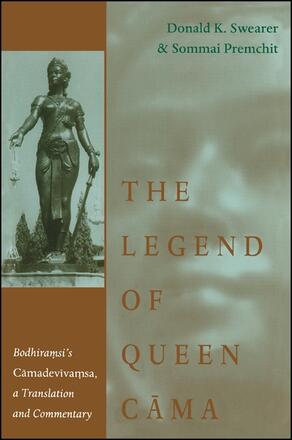
The Legend of Queen Cāma
Bodhiraṃsi's Cāmadevīvaṃsa, a Translation and Commentary
Alternative formats available from:
An English translation and a commentary on the chronicle of Queen Cama, an important but neglected female monarch who founded a dynasty in Northern Thailand.
Description
The Legend of Queen Cāma ( Cāmadevīvaṃsa), an early fifteenth-century Pali chronicle written by Mahathera Bodhiraṃsi, recounts the story of the founding of the kingdom of Haripuñjaya in the Chiang Mai valley of Northern Thailand in the seventh century C.E. Similar to other Theravāda Pali chronicles, the legend integrates religious and political stories, namely, Queen Cāma's founding of a dynastic lineage and the fortunes of Buddhism within it. The Legend of Queen Cāma offers revealing insights into the nature of Buddhism as a living tradition during one of the greatest periods in the history of Thai Buddhism. These insights include the symbolic structure of Buddhist cosmology, the close association of Buddhism and the founding of city states, the interrelationship of popular Buddhist ethical teachings and devotional religion, and the inherently syncretic nature of Buddhism as presented in a text indebted to the folkloric traditions of Northern Thailand.
One of the most striking features of the book is the parallelism between the text's dominant narratives--the Buddha's journey to Northern Thailand and his prediction of the discovery of a Buddha relic by King Adittaraja (eleventh century C.E.), and the founding by Queen Cāma of a lineage destined to govern Haripunjaya for five hundred years. The Buddha and Queen Cāma are equal partners in this creative, cosmically significant act. Both plant the seeds that mature into a Mon Buddhist politico-cultural center that predates the advent of Thai suzerainty in Northern Thailand by five hundred years.
Donald K. Swearer is Charles & Harriet Cox McDowell Professor of Religion, Swarthmore College. He has written and edited many books, among them The Buddhist World of Southeast Asia and Me and Mine: Selected Essays of Bikkhu Buddhadasa, both published by SUNY Press. Sommai Premchit is a Research Associate at the Institute for Social Research, Chiang Mai University, Chiang Mai, Thailand, and an Emeritus Professor, Department of Sociology. He is coauthor of The Lan Na Twelve-Month Traditions.
Reviews
"The translation itself provides easy access to an engaging narrative. More important, though, is the skillful placement of the translated text within several overlapping contexts: historical, context of religious practice, authorial intentions, literary structure." -- Anne M. Blackburn, University of South Carolina, Columbia